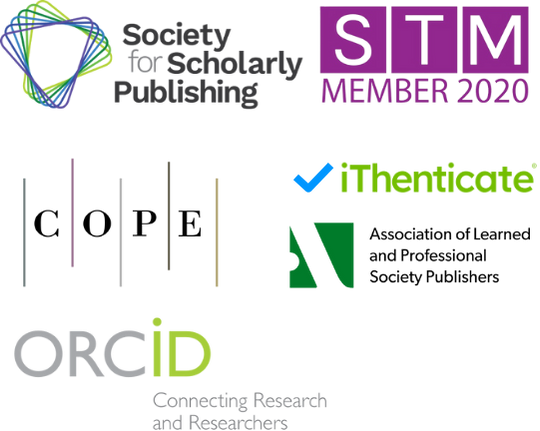Two-Dimensional Metal-Organic Frameworks for Agricultural Applications: Novel Copper Coordination Polymer Design
DOI:
https://doi.org/10.71222/ef1pp983Keywords:
metal-organic frameworks, copper coordination polymers, agricultural applications, urease inhibition, two-dimensional materials, sustainable agricultureAbstract
Two-dimensional metal-organic frameworks (2D MOFs) have emerged as promising materials for agricultural applications due to their unique structural properties and tunable functionality. This study focuses on novel copper coordination polymer designs that demonstrate exceptional performance in agricultural enzyme inhibition, particularly targeting urease activity. The development of copper-based 2D coordination polymers with tailored ligand systems has shown remarkable potential for enhancing agricultural productivity through controlled nutrient release and soil stabilization mechanisms. Recent advances in synthetic methodologies have enabled the creation of highly stable copper coordination frameworks that maintain their structural integrity under agricultural conditions while providing sustained inhibitory effects on soil enzymes. The incorporation of auxiliary ligands in copper-based systems has proven particularly effective in modulating the electronic and structural properties of these materials, leading to enhanced performance in agricultural applications. These 2D copper coordination polymers exhibit superior stability compared to traditional enzyme inhibitors and offer environmentally friendly alternatives for modern sustainable agriculture. The multifunctional nature of these materials allows for simultaneous applications in nutrient management, soil conditioning, and crop protection systems. This review examines the latest developments in copper-based 2D MOF synthesis, characterization, and their specific applications in agricultural enzyme inhibition, providing insights into future directions for sustainable agricultural technology development.
References
1. J. Hungerford and K. S. Walton, "Room-Temperature Synthesis of Metal–Organic Framework Isomers in the Tetragonal and Kagome Crystal Structure," Inorg. Chem., vol. 58, no. 12, pp. 7690–7697, 2019, doi: 10.1021/acs.inorgchem.8b03202.
2. F. Ding, C. Hung, J. K. Whalen, L. Wang, Z. Wei, and L. Zhang et al., "Potential of chemical stabilizers to prolong urease inhi-bition in the soil–plant system," J. Plant Nutr. Soil Sci., vol. 185, no. 3, pp. 384–390, 2022, doi: 10.1002/jpln.202100314.
3. L. Wang, L. Zhang, T. Song, C. Li, J. Xu, and L. Wang, "Solvothermal syntheses, structures and properties of two new In-MOFs based on rigid 1,4-naphthalenedicarboxylate ligand," Microporous Mesoporous Mater., vol. 155, pp. 281–286, 2012, doi: 10.1016/j.micromeso.2011.11.043.
4. Y. Song, X. Zhang, Z. Xiao, Y. Wang, P. Yi, M. Huang, and L. Zhang, “Coupled amorphous NiFeP/cystalline Ni3S2 nanosheets enables accelerated reaction kinetics for high current density seawater electrolysis,” Appl. Catal. B: Environ. Energy, vol. 352, p. 124028, 2024, doi: 10.1016/j.apcatb.2024.124028.
5. Y. Chen, X. Kang, H. Wang, J. Gu, and M. Azam, "Co (II), Ni (II), Mn (II), and Cd (II) Coordination Polymers Constructed with Tetracarboxylic Linker: Syntheses, Structural Investigations, and Catalytic Application," Cryst. Growth Des., vol. 25, no. 2, 2024, doi: 10.1021/acs.cgd.4c01394.
6. G. Xie, W. Guo, Z. Fang, Z. Duan, X. Lang, D. Liu, G. Mei, Y. Zhai, X. Sun, and X. Lu, "Dual-metal sites drive tandem electro-catalytic CO₂ to C₂⁺ products," Angew. Chem., vol. 136, no. 47, p. e202412568, 2024, doi: 10.1002/ange.202412568.
7. S. Lu, Y. Ma, F. Chen, Z. Huang, K. Chen, and A. B. Ibragimov et al., "Enhanced CO2 Capture and Separation with Amino Poly (carboxylic acid) Ionic Liquids@MIL-101: Tailored Functionality for Superior Performance," Ind. Eng. Chem. Res., vol. 64, no. 5, pp. 2958–2965, 2025, doi: 10.1021/acs.iecr.4c04482.
8. P. Martín-Ramos, J. Martín-Gil, R. C. Dante, F. Vaquero, R. M. Navarro, and J. L. G. Fierro, "A simple approach to synthesize g-C3N4 with high visible light photoactivity for hydrogen production," Int. J. Hydrogen Energy, vol. 40, no. 23, pp. 7273–7281, 2015, doi: 10.1016/j.ijhydene.2015.04.063.
9. M. Zhu, Q. Gao, M. Zheng, L. Wang, Y. Sun, and J. Liu et al., "Designing a 2D Calcium Coordination Polymer Interconnected with Carbon as a High-Performance Cathode for Aqueous Zinc-Ion Batteries," ACS Sustainable Chem. Eng., vol. 13, no. 4, pp. 1484–1493, 2025, doi: 10.1021/acssuschemeng.4c06725.
10. K. Schwinghammer, M. B. Mesch, V. Duppel, C. G. Ziegler, J. Senker, and B. V. Lotsch, "Crystalline Carbon Nitride Nanosheets for Improved Visible-Light Hydrogen Evolution," J. Am. Chem. Soc., vol. 136, no. 5, pp. 1730–1733, 2014, doi: 10.1021/ja411321s.
11. F. Ding, N. Su, C. Ma, B. Li, W.-L. Duan, and J. Luan, "Fabrication of two novel two-dimensional copper-based coordination polymers regulated by the 'V'-shaped second auxiliary ligands as high-efficiency urease inhibitors," Inorg. Chem. Commun., vol. 170, p. 113319, 2024, doi: 10.1016/j.inoche.2024.113319.
12. E. E. Elemike, I. C. Onunkwo, O. E. Ididama, O. E. Okorodudu, I. P. Okogbenin, and O. R. Egbele et al., "Exploring the pro-duction and storage of hydrogen energy using graphitic carbon nitride (g-C3N4)," Int. J. Hydrogen Energy, vol. 70, pp. 212–232, 2024, doi: 10.1016/j.ijhydene.2024.05.174.
13. F. Ding, C. Ma, W.-L. Duan, and J. Luan, "Second auxiliary ligand induced two coppor-based coordination polymers and urease inhibition activity," J. Solid State Chem., vol. 331, pp. 124537–124537, 2023, doi: 10.1016/j.jssc.2023.124537.
14. M. Murillo, R. Wannemacher, J. Cabanillas-González, U. R. Rodríguez-Mendoza, J. Gonzalez-Platas, and A. Liang et al., "2D Cu(I)-I Coordination Polymer with Smart Optoelectronic Properties and Photocatalytic Activity as a Versatile Multifunctional Material," Inorg. Chem., vol. 62, no. 28, pp. 10928–10939, 2023, doi: 10.1021/acs.inorgchem.3c00616.
15. Y. Yu, J. Zheng, J. Li, L. Lu, J. Yan, and L. Zhang et al. "Applications of two-dimensional materials in food packaging," Trends Food Sci. Technol., vol. 110, pp. 443–457, 2021, doi: 10.1016/j.tifs.2021.02.021.
16. C. Park, J. W. Baek, E.-C. Shin, and I. Kim, "Two-Dimensional Electrically Conductive Metal–Organic Frameworks as Chemiresistive Sensors," ACS Nanosci. Au, vol. 3, no. 5, 2023, doi: 10.1021/acsnanoscienceau.3c00024.
17. Y. Oruganti, D. Kim, and D.-W. Lim, "Dimensional Crossover and Proton Conductivity in Copper-Based Coordination Poly-mers by Coordinative Guest Insertion," Cryst. Growth Des., vol. 24, no. 4, pp. 1612–1618, 2024, doi: 10.1021/acs.cgd.3c01223.
18. S. T. Hulushe, G. M. Watkins, and S. D. Khanye, "Enhanced Catalytic Activity of a Copper (II) Metal–Organic Framework Constructed via Semireversible Single-Crystal-to-Single-Crystal Dehydration," ACS Omega, vol. 9, no. 7, 2024, doi: 10.1021/acsomega.3c05999.
19. J. Zhao, N. Xia, Z. Tian, F. Xie, H. Dong, and G. Gong et al., "Ligand Exchanges Among [N-I+-N] Halogen Bonds: A Robust Strategy for the Construction of Functional Halogen-Bonded Organic Frameworks (XOFs)," ACS Mater. Lett., vol. 6, no. 2, pp. 508–516, 2024, doi: 10.1021/acsmaterialslett.3c01276.
20. M. Hmadeh, Z. Lu, Z. Liu, F. Gándara, H. Furukawa, and S. Wan et al., "New Porous Crystals of Extended Metal-Catecholates," Chem. Mater., vol. 24, no. 18, pp. 3511–3513, 2012, doi: 10.1021/cm301194a.
Downloads
Published
Issue
Section
License
Copyright (c) 2025 Colin Brennan (Author)

This work is licensed under a Creative Commons Attribution 4.0 International License.


